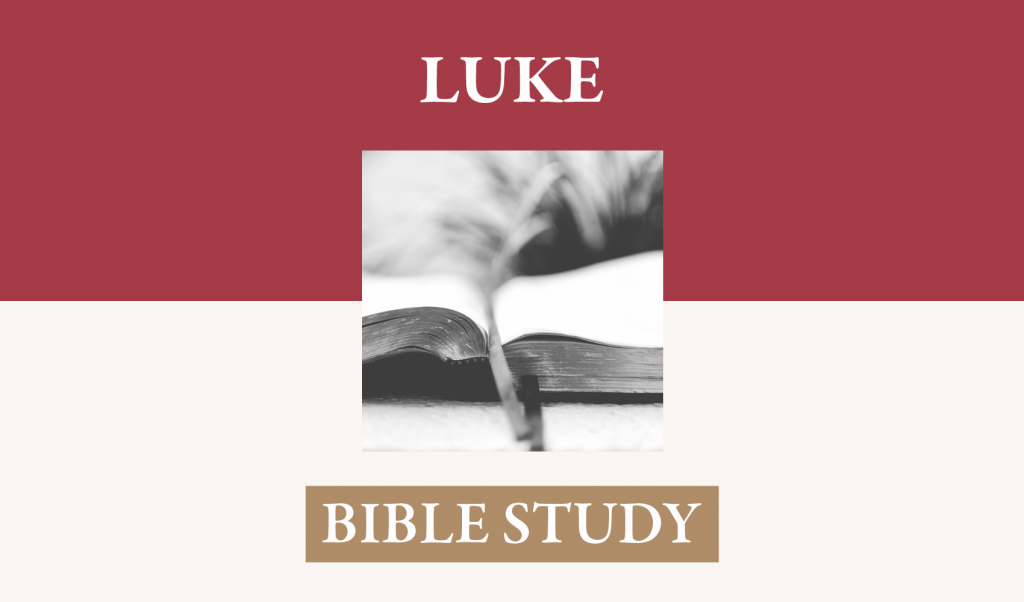I. The Sabbath does not impede the normal sustaining activities of life.
A. The disciples satisfied their hunger with grain after removing the husks (Verse 1). Their taking grain from the field of another was permissible according to Deuteronomy 23: 24, 25. They were hungry and, in their eating, were guiltless: “When you come to your neighbors standing grain, you may pluck the heads with your hand, but you shall not use a sickle on your neighbors standing grain.”
B. The Pharisees accuse them of doing a lawless act (Verse 2).
- It seems that these specific Pharisees were stalking Jesus, looking for some way to build a case against him. Why would they be around them as they walked through a grainfield?
- The disciples, along with Jesus, did not violate any law of the Old Testament. They failed to observe a particular interpretation that had developed in post Old Testament literature such as 1 and 2 Maccabees. Some Pharisees felt that true reverence for the day and obedience to the Law would incorporate these late-developed traditions. Therefore, they asked Jesus why both he and his disciples did what was “not lawful on the Sabbath.”
C. Jesus contends against them with an Old Testament precedent (Verses 3, 4).
- Jesus pointed out that they had not reflected with insight on the Old Testament by asking, “Have you not even read.” They came to him with a tradition; he came to them with a biblical text. The text did not concern the Sabbath, but the well-being of famished men vis a vis a particular provision of ceremonial regulations.
- They accused Jesus and his disciples of breaking a law when they had not done so. They only violated their man-made tradition. Jesus pointed to an event (1 Samuel 21: 6) in which a clearly stated ceremonial law was set aside on account of immediate human need (Leviticus 24:9). The shew bread already had been laid aside and replaced with a dozen fresh-baked loaves. That which was now set aside constituted food for the priest and his family.
- Now, away from its consecrated use, and fit for consumption, the priest used his discretion in light of the pressing need of David and his men and gave what was for the priests to David. If the reality of immediate need is a priority over the normal ceremonial use of the bread, then how much more is it valid to meet human need when only human tradition stands in the way?
D. Jesus claimed a superior grasp of the Sabbath.
- He identified his authority as the anointed one sent from God – “Son of Man.” He used this messianic term to identify himself as one with ultimate authority (Daniel 7:13, 14; Matthew 14:62). He had used it in Luke 5:24 claiming the authority to forgive sins.
- He identified himself as the one who established the Sabbath – “Lord.” He is indeed the Lord and the Sabbath was established by him in the context of his termination of creation. It was the revelation of the moral oughtness of a time of worship being set aside for the recognition of the mighty acts of God. It was to demonstrate the dependence of the creature on the Creator.
- He alone grasps the kind of rest that he intends to give his people – “Sabbath.” As Lord of the Sabbath in its inception as a rest after creation, so this same Lord will establish another Sabbath at the completion of the rest from the work of redemption. As Lord of the Sabbath, Jesus’ understanding of its intent was infinitely superior to that of the Pharisees who confronted Jesus over his use of Sabbath rest.
II. Is an act of healing a violation of the Sabbath? (Verses 6-9)
A. Jesus entered the synagogue on a Sabbath to teach. This was normal for him and fully consistent with the expectations that Jews had of Sabbath observance. After his forty days temptation, Jesus returned to Galilee “in the power of the Spirit, . . . and he began teaching in their synagogues and was praised by all” (Luke 4: 14, 15). When he came to Nazareth, “as was his custom, he entered the synagogue on the Sabbath, and stood up to read.”
- The synagogue developed during the time of exile when the Jews were away from the Temple service. Perhaps Ezekiel 14:1 and 20:1 indicate that such a gathering was developing under the prophetic ministry of Ezekiel, who was a priest (Ez. 1: 3).
- As the synagogue became more formalized, officers were selected [ISBE]: elders, the ruler, the servants (janitorial duties and agents of discipline), delegates (chosen by the ruler to read Scripture and prayers), an interpreter to translate the passage into Aramaic; Almoners to collect and distribute aid for the poor.
- The order of the service followed, without the sacrifices, what would have been done in the temple service. Elements of this service included:
- a recitation of the Shema by those attending, basically the words of Deuteronomy 6:4-9, sometimes supplemented with other passages emphasizing the unity and uniqueness of God.
- A system of 18 prayers developed from which prayers were given followed by “Amen” for the congregation. These prayers emphasized the excellence of God’s attributes, the certainty of his promises, and the greatness of his mercies.
- A reading from the law and the prophets was a regular feature following a designated division to achieve a complete reading over a course of three years.
- A sermon based on the Scripture reading followed; anyone present could be asked to make comments on what had been read. Devotional thoughts, specific application of the text to relevant ethical cases, and thoughts of the glory and blessings of the Messiah would provide material for the sermon. In Luke 4: 14-30, Jesus did both the reading and the preaching, pointing to himself as the one who fulfilled the prophecy of Isaiah 61: 1, 2.
- In closing, a priest would offer a benediction at the end of which another corporate “Amen” would close the service.
B. Not only were there withered souls there in need of the clear and uncluttered instruction of Jesus, but a man with a withered hand was there needing a touch from the Creator. Since services included an offering for the poor, of how much greater relevance would it be actually to provide immediate relief to one whose physical ailment inhibited his normal functioning in life: “and there was a man there whose right hand was withered.” The text from Isaiah in Luke 4 announced the messianic blessing of preaching the gospel to the poor, the release of captives, and the healing of debilitating diseases. The demonstration of messianic mercies was immediately in front of Jesus and in sight of those who were in the congregation. Instruction and exposition is profitable for training in righteousness; effectual action is the final goal of proper instruction.
C. The Pharisees were there, not for instruction, but to seek an occasion for accusation. Rather than a claim of messianic fulfillment, Jesus proposed and performed what Scripture promised the Messiah would come to do, at least in part.
- They knew that he had healed on many occasions. They feared the conclusions that people were drawing about him both for his teaching and his work of power. People were astonished, glorified God, and became filled with reverence and awe (5: 26). In 4:36 we read, “Amazement came upon them all, and they began talking with one another saying, ‘What is this message? For with authority and power He commands the unclean spirits and they come out.’” The healing of chapter 5 was done “one day.” Now, they wanted to see if he would perform this work on the Sabbath. They would consider something of such great proportions to violate their standards of how much exertion was lawful on the Sabbath.
- Their reason had nothing to do with the true direction of the evidence Jesus provided through his work. Rather, they reasoned from their self-created assumptions to serve only their disposition of jealousy and intensifying hatred. They were not observing with open minds but sought evidence to accuse and convict him. A heart of hatred will not find reasons for love and respect. The purpose of these particular “scribes and Pharisees” is a case in point of how sinfulness blinds the mind and affections against a true knowledge of God (Romans 1: 18, 19; 3: 10-19).
D. Jesus set up the occasion for them to make their accusation (Verse 8).
- Because Jesus knew, not only in general, but in all cases specifically, what was in the heart of man, he knew that they were ready to seize on this opportunity to destroy him.
- He would not shrink for doing right merely on the basis of their perverse perceptions of Sabbath observance, More than that, he would not be intimidated by their malignant intent: “But he knew, . . . and he said.”
- He walked right into the mental trap with full knowledge of how they would respond. The man that he intended to heal was asked to come forward so that all might see the act. Though Jesus would ask that others not reveal his identity (Matthews 16: 20: 17:9; Mark 1: 43-45; 8: 26; Luke 8:56), nevertheless, his works, as well as his words, were witnesses to his identity (John 5: 19-23).
E. Jesus asked a provocative question to reveal their superficiality, the ungodliness of their tradition, and the evil intent of their hearts (Verse 9).
- “If the Sabbath is a day set aside for observing the kindness and goodness of God as we find him revealed in creation, his covenantal mercies, and in the Law, would it not be consistent with its purpose and memorial intent to heal rather than to leave one maimed?” To leave one maimed is to surrender to the death inflicted by the curse of sin on the world. Should Jesus, therefore, surrender to the infliction of death, or should he show that he has come to overthrow death? He has not come to kill and destroy but to give life. Is not the Sabbath itself a recognition of God’s mercies in restoring life and energy to fallen creatures?
- This question sets the moral reality of the scene in proper perspective. The Pharisees loved their power and dominance and control in the community. They loved the praise of men and their reputations as learned and separated for holy purposes. The great flaw, however, to which they were blind was that they did not understand the law of God to love one’s neighbor nor did they really grasp the purpose of Sabbath. Jesus had pointed this out with force in John 7:21-24 as he reflected on their response to his healing on the Sabbath a man who had been lame for thirty-eight years (John 5:1-15).
III. Jesus showed his compassionate Lordship and the Pharisees showed their perversity of heart (Verses 10, 11)
A. Jesus gave a visible demonstration of his answer to the proposed question.
- “He looked around at them all,” creating an embarrassing silence as they had no way to process and answer the depth of Jesus’ question.
- Jesus broke the silence and answered his own question with an act of divine power and compassion. Is it lawful to give life on the Sabbath? Yes, it is; and the healing that Jesus gave provided a resounding “Yes” to his own question.
B. They showed the true lawlessness of their hearts even as they conceived of themselves as guardians of the Law. Were they happy at the healing and the resultant restoration of a whole and productive life for this man? No. It never entered their mind to rejoice with the one who was healed. They only saw a challenge to their authority and their unworthy wresting of the text of revealed truth.
C. Followers of the Lamb show their devotion to him by showing forth him as the way, the truth, and the life. Particularly do they find the Sabbath, the Lord’s day, as a time for their own souls to be restored by his healing word and to seek the spiritual health and restoration of others through true worship in the proclamation of life-giving truth.




















